ZATSUYOSEN!
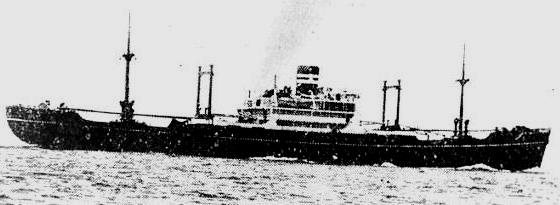 (TOA MARU prewar)
(TOA MARU prewar) )
IJN TOA MARU No. 2 GO:
Tabular Record of Movement
© 2011-2017 Gilbert Casse, Bob Hackett and Peter Cundall
Revision 5
3 December 1937:
Koyagijima, near Nagasaki. Laid down by Kawaminami Kogyo K.K. Zosensho shipyard as a 6,732-tons passenger/cargo ship for Kokusai Kisen K.K., Tokyo, but purchased on the stock by Osaka Shosen K.K., Osaka.
8 December 1938:
Launched and named TOA MARU.
31 July 1939:
Completed and registered in Osaka.
E 1939-1940:
Placed on OSK’s Japan ~ West Africa regular run.
E July 1940:
British government puts limitations on merchant ships calling African ports under British control and OSK’s West Africa commercial service is ended.
18 August 1941:
Requisitioned by the IJN as a transport (Ippan Choyosen) and attached to the Yokosuka Naval District. [1]
28 August 1941:
Arrives at Nagoya, Aichi Prefecture. Departs later that same day for Yokosuka.
29 August 1941:
Arrives at Yokosuka.
30 August 1941:
Transfers to Yokohama.
1 September 1941:
Departs Yokohama.
28 September 1941:
Arrives at Callao, Peru.
29 September 1941:
Departs Callao for Valparaiso, Chile.
4 October 1941:
Arrives at Valparaiso.
5 October 1941:
Departs Valparaiso for Buenos Aires, Argentina.
15 October 1941:
Arrives at Buenos Aires.
24 October 1941:
Departs Buenos Aires for Rio de Janeiro, Brasil.
29 October 1941:
Arrives at Rio de Janeiro.
29 October 1941:
Departs Rio de Janeiro.
15 December 1941:
Arrives at Yokohama.
18 December 1941:
Departs Yokohama for Osaka.
19 December 1941:
Arrives at Osaka.
24 December 1941:
Transfers to Kobe. Enters Kawasaki Jukogyo K.K. shipyard to start her conversion to an auxiliary transport.
10 January 1942:
Registered in the IJN as an auxiliary transport under internal order No. 77 and attached to the Sasebo Naval District.
15 January 1942:
Renamed TOA MARU No. 2 GO under Navy’s secret instruction No. 513. Attached that same day to the Sasebo Naval District as an auxiliary transport (Otsu) category. Her home port is Sasebo. [2] [3]
16 January 1942:
The conversion is completed. Departs Kobe for Sakito, Nagasaki Prefecture, Kyushu.
18 January 1942:
Arrives at Sakito.
19 January 1942:
Departs Sakito for Tokuyama, Yamaguchi Prefecture.
20 January 1942:
Arrives at Tokuyama. Probably replenishes fuel.
27 January 1942:
Departs Tokuyama and arrives that same day at Kure.
2 February 1942:
Departs Kure for Davao, Mindanao, Philippines.
9 February 1942:
Arrives at Davao.
27 February 1942:
Departs Davao for Garasumao, (Babelthuap), Palaus.
1 March 1942:
Arrives at Garasumao.
10 March 1942:
Departs Garasumao for Yokohama.
16 March 1942:
Arrives at Yokohama.
20 March 1942:
Transfers to Yokosuka.
28 March 1942:
Departs Yokosuka for Saipan, Marianas.
1 April 1942:
Arrives at Saipan.
5 April 1942:
Departs Saipan and arrives that same day at Guam (renamed Omiya Island after its capture), Marianas.
7 April 1942:
Departs Guam for Palau, western Carolines.
9 April 1942:
Arrives at Palau.
15 April 1942:
Departs Palau for Truk, central Carolines.
19 April 1942:
Arrives at Truk.
24 April 1942:
Departs Truk for Kure.
30 April 1942:
Arrives at Kure.
19 May 1942:
At 1700 departs Kure for Saipan with KIRISHIMA, YAMAFUKU and KANO MARUs escorted by destroyers of 18th DesDiv SHIRANUI and KASUMI.
20 May 1942:
Off Bungo Suido meets up with NANKAI and ZENYO MARUs both from Moji, who join the convoy.
25 May 1942:
At 0835 arrives at Saipan.
28 May 1942: Operation “MI” -The Battle of Midway:
TOA MARU No. 2 GO is in Vice Admiral (later Admiral) Kondo Nobutake's (35) Midway Invasion Force with Rear Admiral (later Vice Admiral) Tanaka Raizo's (41) Transport Group’s also consisting of KANO, KIYOSUMI, ZENYO, ARGENTINA, BRAZIL, AZUMA, GOSHU, NANKAI, KEIYO, KIRISHIMA and HOKUROKU MARUs, oiler AKEBONO MARU escorted by by patrol boats PB-1, PB-2, and PB-34, DesRon 2’s light cruiser JINTSU with DesDiv 15’s KUROSHIO, OYASHIO, DesDiv 16’s AMATSUKAZE, HATSUKAZE, TOKITSUKAZE, YUKIKAZE and DesDiv 18’s destroyer-transports ARARE, KASUMI and SHIRANUHI. The transports carry an airfield construction unit, LtCol Ichiki Kiyonao's IJA detachment and two battalions of Special Naval Landing Forces (SNLF).
Rear Admiral Fujita Ruitaro’s (38) 11th Seaplane Tender Division’s CHITOSE and KAMIKAWA MARU provide air cover. The Midway Invasion Force departs Saipan and heads to Midway Islands.
3 June 1942:
The convoy is bombed by nine B-17s. TOA MARU No. 2 GO is undamaged. Then the convoy is attacked by torpedo-carrying PBY amphibious patrol planes. AKEBONO MARU is torpedoed and KIYOSUMI MARU is strafed. TOA MARU No. 2 GO is again undamaged.
4 June 1942:
The convoy is contacted by PBY P-12; one of eleven VP-44 launched from Midway that morning on a search/strike mission. Seaplane carrier CHITOSE launches three Mitsubishi F1-M "Pete" fighter float biplanes to intercept the flying boat. They engage P-12 at 500 feet and shoot it down into the sea. Lt (j.g.) Robert Whitman and four of his ten-man aircrew are lost. [4]
6 June 1942:
Due to IJN’s defeat at Midway, Operation “MI” is cancelled under instruction No. 161.
13 June 1942:
Arrives at Truk.
20 June 1942:
Departs Truk for Kavieng, New Ireland.
23 June 1942:
Arrives at Kavieng.
3 July 1942:
Departs Kavieng for Truk escorted by destroyer/s from DesDiv 30, probably MUTSUKI.
5 July 1942:
Arrives at Truk.
6 July 1942:
Departs Truk for Yokosuka escorted by destroyer MUTSUKI.
12 July 1942:
Arrives at Yokosuka.
14 July 1942:
Transfers to Tokyo.
15 July 1942:
Departs Tokyo for Kobe.
16 July 1942:
Arrives at Kobe.
20 July 1942:
Departs Kobe for Kure.
21 July 1942:
Arrives at Kure.
26 July 1942:
Departs Kure for Surabaya, Java. Sails alone and apparently unescorted.
5 August 1942:
Arrives at Surabaya.
8 August 1942:
Departs Surabaya for Kupang, Timor.
10 August 1942:
Arrives at Kupang.
13 August 1942:
Departs Kupang for Ambon, Moluccas.
15 August 1942:
Arrives at Ambon.
19 August 1942:
Departs Ambon for Truk.
25 August 1942:
Arrives at Truk.
27 August 1942:
At 0800 departs Truk for Mili Atoll, Marshalls escorted by submarine chaser CH-30.
31 August 1942:
Arrives at Mili.
3 September 1942:
Departs Mili for Imieji anchorage, Jaluit Atoll Marshalls.
4 September 1942:
Arrives at Imieji. Departs later and arrives that same day at Jabot (Jabwot) Island, Marshalls.
5 September 1942:
Departs Jabo for Kwajalein, Marshalls.
6 September 1942:
Arrives at Kwajalein.
7 September 1942:
Departs Kwajalein for Yokosuka.
14 September 1942:
Arrives at Yokosuka.
16 September 1942:
Transfers to Yokohama.
18 September 1942:
Departs Yokohama for Niihama, Shikoku.
20 September 1942:
Arrives at Niihama.
28 September 1942:
Departs Niihama and arrives that same day at Osaka.
1 October 1942:
Departs Osaka for Mutsure.
2 October 1942:
Arrives at Mutsure. At 1700 departs for Takao, Formosa (now Kaohsiung, Taiwan) in convoy No.170 also consisting of auxiliary oilers TAKASAGO and PALEMBANG MARUs and OGURA MARU No. 1, and auxiliary transport HIROTA MARU escorted by auxiliary gunboat HUASHAN (KAZAN) MARU.
6 October 1942:
Arrives at Takao.
9 October 1942:
Departs Takao for Kendari, Celebes (now Sulawesi).
16 October 1942:
Arrives at Kendari.
17 October 1942:
Departs Kendari for Pomalaa, Celebes.
18 October 1942:
Arrives at Pomalaa.
11 November 1942:
Departs Pomalaa for Menado (Manado), Celebes.
16 November 1942:
Arrives at Menado.
21 November 1942:
Departs Menado for Osaka.
29 November 1942:
Arrives at Osaka.
2 December 1942:
Departs Osaka for Niihama.
3 December 1942:
Arrives at Niihama.
6 December 1942:
Departs Niihama and arrives later that day at Kure.
E 7-10 December 1942:
Embarks the second echelon of the 19th Naval Construction Unit, building materials and supplies to be landed at Munda, New Georgia, Solomons.
11 December 1942:
Departs Kure in a convoy also consisting of auxiliary transport (ex-armed merchant cruiser) NOSHIRO MARU escorted by patrol boat PB-31.
E 13 December 1942:
At 29N, PB-31 is detached from the convoy.
22 December 1942:
Arrives at Rabaul, New Britain.
21 January 1943:
Departs Rabaul for Shortland, Bougainville, Solomons transporting troops to be landed at Kolombangara Island, Solomons with NOSHIRO MARU escorted by destroyer OSHIO.
22 January 1943:
Arrives at Shortland.
23 January 1943:
Departs Shortland transporting the second echelon of the 19th Naval Construction Unit (and possibly other units) escorted by torpedo-boat HIYODORI and subchaser CH-23, and arrives later that day at Kolombangara. Disembarks troops.
24 January 1943:
Departs Kolombangara and arrives later in the day at Shortland.
25 January 1943:
At 1430, departs Shortland for Rabaul with auxiliary transport YAMAFUKU MARU.
26 January 1943:
At 1600, arrives at Rabaul.
28 January 1943:
Evening. Departs Rabaul transporting 107 troops, two light tanks, a side-car motorcycle and a cargo of cement and ammunition to be landed at Vila, Kolambangara Island with escort provided by torpedo boat HIYODORI, subchaser CH-23 and minelayer KAMOME.
29-30 January 1943:
TOA MARU No. 2 GO gets an overhead cover by four Type 0 F1M2 “Pete “ floatplanes from the 958fg based at Poporang Is. Additionally, four to eight IJAAF KI 43-1 “Oscar” fighters from the 11th Fighter Regiment Detachment from Munda patrol the area. Minelayer KAMOME is detached and probably goes to Bougainville Island.
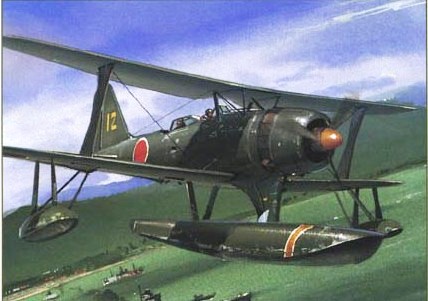 (Mitsubishi F1M “Pete”)
(Mitsubishi F1M “Pete”)
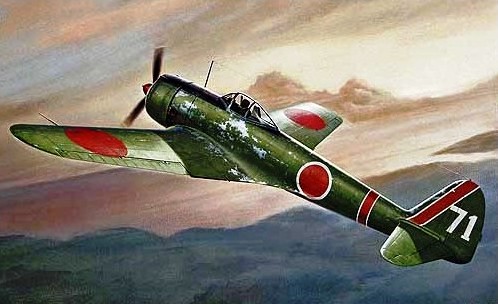 (Nakajima Ki43 “Oscar”)
(Nakajima Ki43 “Oscar”)
30 January 1943:
About 5 nms S of Vella Lavella Island, Solomons. Between 1605-1620, TOA MARU No. 2 GO sustains an airstrike from Guadalcanal 12 VSMB 233 Douglas SBD “Dauntless” dive-bombers escorted by eight VMF-112 F4F “Wildcat” fighters led by 1st Lt (later Col) Jefferson J. De Blanc (later MOH). In the ensuing air battle, two F1M2, one Ki-43, two SBD-4 and two F4F-4 aircraft are shot down. TOA MARU No. 2 Go is hit by two bombs in No. 1 and No. 2 holds. At 2250, after all efforts to reduce flooding and list fail, TOA MARU No. 2 GO is abandoned and finally sinks N of Gizo Island. All troops are rescued and only one crewman and two soldiers are KIA.
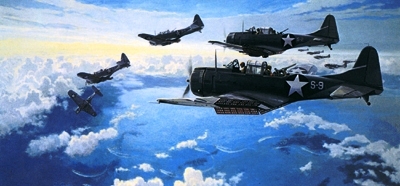 (Douglas SBD “Dauntless”)
(Douglas SBD “Dauntless”)
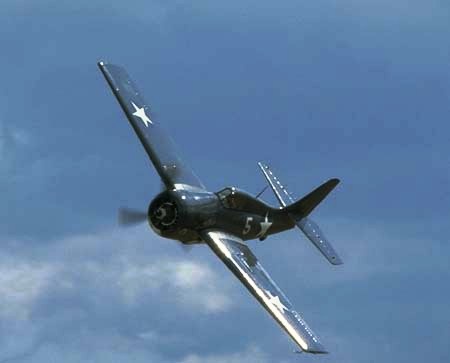 (Grumman F4F “Wildcat”)
(Grumman F4F “Wildcat”)
1 April 1943:
Removed from the Navy’s list under internal order No. 587.
Authors Notes:
[1] See Zatsuyosen home page for full explanation.
[2] Renamed to avoid any confusion with auxiliary tanker TOA MARU.
[3] There were two categories of Zatsuyosen. (Ko) category with an IJN Captain as supervisor aboard and (Otsu) category without.
[4] Five surviving members of 44-P-12's aircrew were rescued at 1455 (local) 6 June by PBY-5 of VP 23. But unfortunately one of them died the next day, bringing the total KIA to six. PBY 44-P-12 was the only PBY lost in combat with Japanese forces during the battle of Midway.
Thanks go to Gengoro S. Toda of Japan. Thanks also go to Allan Asleben of Oregon for details provided on the transport’s final voyage and to John Whitman of Virginia for troop info.
Gilbert Casse, Bob Hackett and Peter Cundall
Back to
IJN Transports Page









